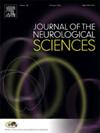Discrete event simulation model of an acute stroke treatment process at a comprehensive stroke center: Determining the ideal improvement strategies for reducing treatment times
IF 3.6
3区 医学
Q1 CLINICAL NEUROLOGY
引用次数: 0
Abstract
Background
Fast treatment is crucial for ischemic stroke patients; the probability of good patient outcomes increases with faster treatment. Treatment times can be improved by making changes to the treatment process. However, it is challenging to identify the benefits of changes prior to implementation. Simulation modelling, which mimics the treatment process, can be used to evaluate changes without patient involvement. This study models the acute stroke treatment process using discrete event simulation (DES) and identifies improvement strategies to reduce treatment times.
Method
The model was developed for a comprehensive stroke center in Nova Scotia, using Python. All treatment pathways and sub-tasks were identified via an observational time and motion study conducted in the center. Nine process change scenarios were tested individually and in combinations. The primary outcome measures were door-to-CT time (DTCT), door-to-needle time (DNT), and door-to-groin puncture time (DGPT). The model simulated 500 patients 30 times.
Results
Collecting patient history on the way to the radiology department (rather than in ED) showed the highest reduction among individual scenarios for DTCT (14.2 vs 12.4 min, p < 0.001). Combining all scenarios in the door-to-CT process resulted in a reduction of the DTCT by approximately 28 %. Thrombolysing patients in the imaging department's waiting area resulted in the lowest DNT (39.4 vs 34.8 min, p < 0.001) among all individual scenarios. The highest reduction in DGPT, among all individual scenarios, was achieved by implementing Rapid angiosuite preparation (67.7 vs 51.4 min, p < 0.001). The combinations of all scenarios resulted in the lowest DTCT (14.2 vs 10.1 min, p < 0.001), DNT (39.4 vs 23.0 min, p < 0.001), and DGPT (67.9 vs 38.5 min, p < 0.001).
Conclusions
The study identified various improvement strategies in the acute stroke treatment process through a discrete-event simulation model. Combining all scenarios resulted in significant reductions for all outcome measures.
综合中风中心急性中风治疗过程的离散事件模拟模型:确定减少治疗时间的理想改进策略。
背景:快速治疗对缺血性脑卒中患者至关重要;随着治疗速度的加快,患者预后良好的可能性也会增加。可以通过改变治疗过程来缩短治疗时间。然而,在实现之前确定变更的好处是具有挑战性的。模拟模型,模仿治疗过程,可用于评估变化,而无需患者参与。本研究使用离散事件模拟(DES)对急性卒中治疗过程进行建模,并确定减少治疗时间的改进策略。方法:以新斯科舍省某综合性脑卒中中心为研究对象,采用Python软件开发模型。所有治疗途径和子任务都是通过在中心进行的观察时间和运动研究来确定的。对9个流程变更场景进行了单独和组合测试。主要结局指标为门到ct时间(DTCT)、门到针时间(DNT)和门到腹股沟穿刺时间(DGPT)。该模型模拟了500名患者30次。结果:在去放射科(而不是急诊科)的途中收集患者病史显示,在不同的情况下,DTCT的减少幅度最大(14.2分钟vs 12.4分钟),p结论:该研究通过离散事件模拟模型确定了急性卒中治疗过程中的各种改善策略。综合所有情景,所有结果测量指标均显著降低。
本文章由计算机程序翻译,如有差异,请以英文原文为准。
求助全文
约1分钟内获得全文
求助全文
来源期刊

Journal of the Neurological Sciences
医学-临床神经学
CiteScore
7.60
自引率
2.30%
发文量
313
审稿时长
22 days
期刊介绍:
The Journal of the Neurological Sciences provides a medium for the prompt publication of original articles in neurology and neuroscience from around the world. JNS places special emphasis on articles that: 1) provide guidance to clinicians around the world (Best Practices, Global Neurology); 2) report cutting-edge science related to neurology (Basic and Translational Sciences); 3) educate readers about relevant and practical clinical outcomes in neurology (Outcomes Research); and 4) summarize or editorialize the current state of the literature (Reviews, Commentaries, and Editorials).
JNS accepts most types of manuscripts for consideration including original research papers, short communications, reviews, book reviews, letters to the Editor, opinions and editorials. Topics considered will be from neurology-related fields that are of interest to practicing physicians around the world. Examples include neuromuscular diseases, demyelination, atrophies, dementia, neoplasms, infections, epilepsies, disturbances of consciousness, stroke and cerebral circulation, growth and development, plasticity and intermediary metabolism.
 求助内容:
求助内容: 应助结果提醒方式:
应助结果提醒方式:


